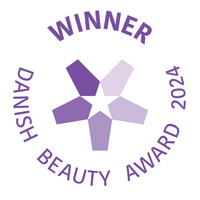Knowledge about the UV curing process

Everything we move in, are exposed to, and touch is chemistry. The glass of water we drink from is made of one chemical structure, just as the water inside the glass is made of another chemical structure. The same applies to our nail products. Whether it's Gel Polish, Builder Gel, Polygel, or something entirely different, each has its chemical structure and may behave differently. When working with nail products, whether privately or professionally, it is therefore interesting to know a little about how chemistry works.
A liquid nail product consists of many different molecules, including monomers (very small molecules) and oligomers (slightly larger, composed molecules). When these molecules need to meet and form a cured product, the product must be added to what is called photoinitiators. The chemical process begins when the photoinitiators in the uncured product are exposed to UV light. When this happens, the photoinitiators are activated, then release energy in the form of free radicals. The free radicals then bind all the free molecules (monomers and oligomers) into one polymer. As this happens, the product transitions from liquid to solid form.
If you dig a little deeper into the chemistry, you will see that photoinitiators are not activated by any kind of UV light. The various photoinitiators added to nail products can have different UV requirements in terms of wattage and wavelengths (nm/nanometer). It is therefore important to ensure that your UV lamp can deliver exactly the type of UV light that your nail products require. The UV lamps from The Gel Collection emit UV light at a minimum of 48W and dual wavelengths of 365+405 nm. This is precisely what the nail products from The Gel Collection, and indeed the vast majority of other UV-curing products on the market, require.
Fact
When the energy from the photoinitiators is released, heat formation can occur in the product, which can be felt as a burning sensation in the nails. Although it can hurt, it is neither dangerous nor harmful. Always remove your hands from the UV lamp if it burns, or use the Low Heat Mode, which over 90 seconds gradually increases the effectiveness of the UV light and thus ensures a gentler curing.


